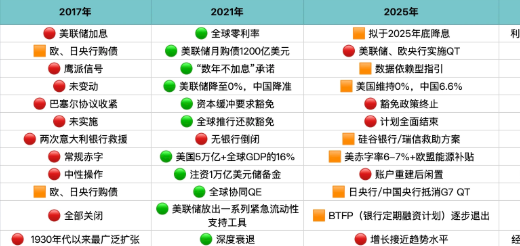I. Industry Risk Analysis
(1) Policy Risk
From the perspective of the policy lifecycle theory, the freeze-dried food industry faces the risk of vague standards during the policy formulation period. For example, sudden upgrades in production specifications or nutritional standards may lead to a sharp increase in compliance costs. During the policy implementation period, there are regional differences in regulatory intensity. Strict inspections of additives or sterilization processes in some areas may trigger suspension of production for rectification. During the policy evaluation and adjustment period, if the industry is mistakenly classified as high-energy-consuming, the cancellation of tax incentives or the intensification of environmental protection production restrictions will directly squeeze profit margins, and changes in overseas market access policies will disrupt the rhythm of export layout.
(2) Economic Risk
The freeze-dried food industry currently faces the dual risks of demand fluctuations and cost pressures. The capital influx during the economic expansion period drives up the industry’s production capacity. However, when the economy slows down, consumers may switch to low-cost alternatives, resulting in inventory backlogs and price wars. Under inflationary pressure, the costs of raw materials and cold-chain logistics continue to rise, and the tightening financing environment intensifies the cash flow pressure. If start-ups cannot balance quality and cost, they are prone to fall into a profit dilemma. Coupled with the uncertainty of the consumption upgrade trend, enterprises with low industry competition barriers will face greater survival challenges.
(3) Social Risk
The freeze-dried food industry faces social risks caused by differences in consumption preferences among generations. Young consumers pursue convenience and health upgrades, putting forward higher requirements for the nutritional value and ingredient transparency of freeze-dried products. However, the adherence of the middle-aged and elderly to traditional eating habits may create a consumption gap. The Z generation is less sensitive to online celebrity marketing, and business models overly dependent on traffic-driven may encounter a trust crisis. The contradiction between the high-premium nature of the supply chain and the insufficient consumption power in the sinking market may exacerbate the “pseudo-high-end” bubble in the industry, leading to a concentrated outbreak of doubts about the actual value of freeze-drying technology in society.
(4) Legal Risk
Entrepreneurs in the freeze-dried food industry face multiple legal risks. In the production process, they must strictly comply with food quality and safety regulations. Non-compliance in raw material procurement and processing may lead to food safety accidents and result in high compensation. Product labels must be true and accurate. Incorrect ingredient labeling or exaggerated functions will face penalties from regulatory authorities. Marketing and publicity should avoid false efficacy claims that cross the red line of advertising laws. Insufficient intellectual property layout may lead to technology infringement disputes, and the lack of confidentiality agreements in OEM cooperation may lead to the risk of commercial secret leakage. Loopholes in supply chain contract terms may bring default risks, and cross-border e-commerce also needs to deal with compliance challenges caused by differences in food import regulations in the destination countries.
II. Entrepreneurship Guide
(1) Suggestions on Entrepreneurial Opportunities
Currently, entrepreneurial opportunities in the freeze-dried food industry are concentrated in the segments of healthy snacks, functional foods, and pet foods. Entrepreneurs can develop high-protein freeze-dried fruit and vegetable combinations for fitness enthusiasts or create additive-free freeze-dried baby food for the maternal and infant market. On the technical side, they can optimize the freeze-drying process to reduce energy consumption costs and establish small-batch flexible production lines to meet the OEM needs of online celebrity brands. On the channel side, they can integrate live e-commerce and community group-buying resources, focus on the concept of “fresh-keeping technology + transparent supply chain”, and develop the new demand for portable nutritious foods in second- and third-tier cities. At the same time, they should pay attention to product innovation with long shelf life for camping and emergency reserve scenarios.
(2) Suggestions on Entrepreneurial Resources
Entrepreneurs in the freeze-dried food industry should focus on the precise matching of supply chain, technology, and market resources. Upstream, they should lock in high-quality agricultural product suppliers and ensure a stable supply of raw materials through contract farming or cooperative models. In the middle, they should integrate freeze-drying equipment resources, preferably using equipment leasing or OEM models to reduce heavy asset investment, and cooperate with scientific research institutions to optimize the production process. Downstream, they should connect with e-commerce platforms, health communities, and new retail channels, use KOL evaluations, and cooperate with cold-chain logistics service providers to improve product reach efficiency. They should also apply for innovation subsidies for food processing, introduce industrial funds or crowdfunding to fill the cash flow gap, focus on exploring the user needs in niche scenarios such as ready-to-eat meal replacements and maternal and infant snacks, and establish a differentiated brand image.
(3) Suggestions on Entrepreneurial Teams
Entrepreneurs in the freeze-dried food industry need to build a composite team with expertise in food processing technology, supply chain management, and insight into health consumption. They should focus on recruiting freeze-drying process engineers to control production quality, nutrition professionals to develop innovative formulas, and e-commerce operation experts to expand online channels. A dynamic equity distribution mechanism should be established to bind core members, and cross-training between the production and market sides should be organized regularly to enhance synergy. Partners with experience in the snack food or health product industry should be preferred to shorten the market verification cycle. The team should maintain a small and agile structure (6 – 8 people) to quickly iterate SKUs in response to changes in consumption trends.
(4) Suggestions on Entrepreneurial Risks
Entrepreneurs in the freeze-dried food industry need to focus on differentiated product positioning to avoid homogeneous competition. They should first target blue ocean niche markets such as functional foods and pet snacks, establish a model of direct sourcing from raw material origins and light-asset cooperation with contract manufacturers to reduce the initial investment risk, and closely monitor the loss rate of the FD process (it is recommended to control it within 8%) and the proportion of packaging material costs (compress it to less than 15% of the total cost). On the supply chain side, they should sign stepped price agreements with more than three raw material suppliers to hedge against the risk of fruit and vegetable price fluctuations. On the production side, they must obtain HACCP and FSSC22000 certifications to prevent food safety accidents, and strictly control the inventory turnover days within 45 days. In channel layout, they should focus on developing cross-border e-commerce (the profit margin is 18 – 25% higher than that of traditional channels) and build a traceability system. At the policy level, they should closely monitor the adjustment of export tax rebate policies and the window period of RCEP tariff reductions.





